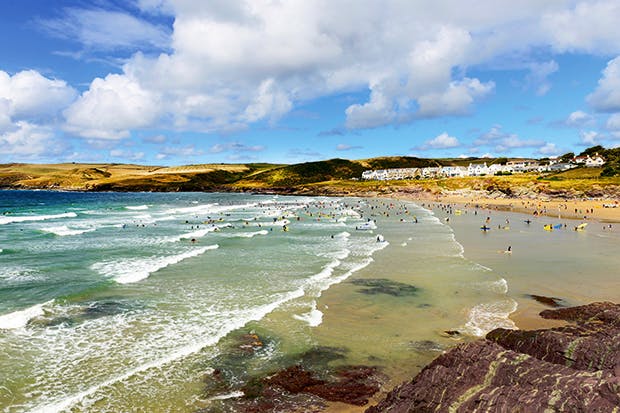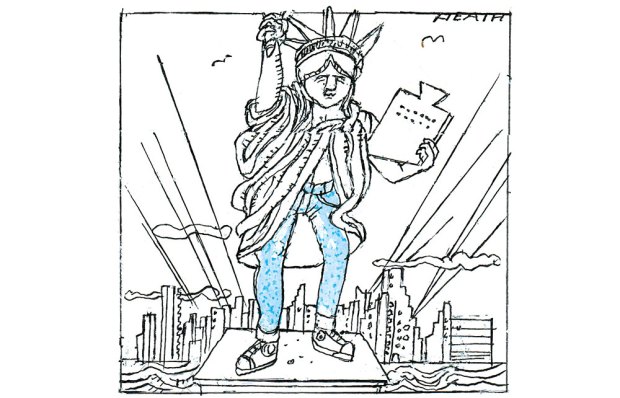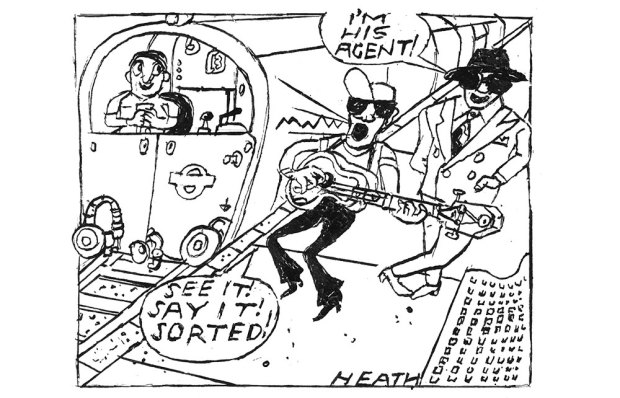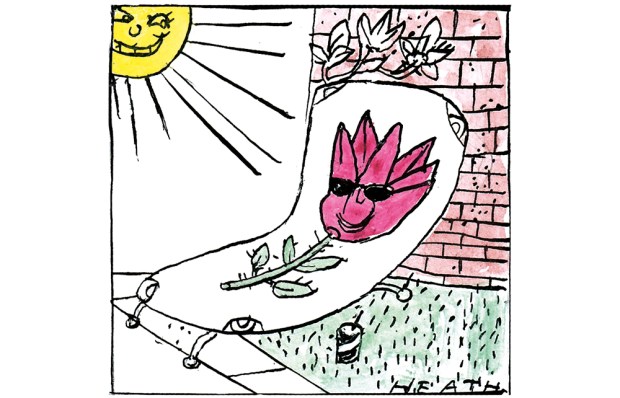In a documentary filmed at the end of his life, Sir John Betjeman, who lived in the village of Trebetherick on the Camel estuary in north Cornwall, famously regretted not having had more sex. That problem doesn’t seem apply to today’s party crowd in the area. Nearby Rock and Polzeath are thronging with bingeing public-school teenagers, traffic jams of gleaming 4x4s, and new-build houses with plasma screens, wet rooms and all that hedge-funders require.
David Cameron has body-boarded at Polzeath on recent holidays, his security detail bobbing like seals around him. For children of the 1960s, memories of frugal holidays in north Cornwall include pasties, fathers in baggy shorts, and limbs turning blue with cold. Betjeman may have evoked the ‘sand in the sandwiches, wasps in the tea’ in his poems celebrating the era of Morris Minors and unspoilt beaches. But the picnics I remember culminated in tangled kites, gashed feet, and appeals for cash for the Mr Whippy van. Even on occasions sunburn.
At Rock, Trebetherick and Constantine, quite a few holiday houses have been passed down the generations. My grandparents bought a place on the west bank of the estuary in the mid-1930s and lived there without electricity or mains water for 40 happy years. We still have the house. As grandchildren we raced up the drive to wave at and spit on the train as it passed under the bridge at Tregunna, between Padstow and Wadebridge, on the most idyllic line in England.
That line is now a bike-hire highway, so busy it is unwalkable in summer. The track terminates at Padstow beneath the gray Metropole Hotel (built in 1904), a subdued time-warp of clinking china and silverware. Padstow in season is booming; stuffed with galleries, boutiques, seafood (formerly known as fish) restaurants, and bakeries selling ambitious pasties containing Thai chicken and chorizo. The town can just about cope with its obese hordes, swollen by chef Rick Stein’s empire. But tiny Port Isaac, a few miles further up the coast, is now a hopelessly car-choked victim of the success of the Doc Martin TV series that is filmed there.
At the mouth of the Camel estuary, the cockles are gone and no one knows why. But the rocks, marshes and sands at low tide have plenty of mussels, razor clams, sea spinach and samphire for the picking. Bass bomb up the river with the fast incoming tide. Dabs lying in the sand can be piked with a rake-like implement that sends an electric jolt up your arm when you spear a fish. Their flesh tastes of mud. Otters have returned, and in colder months the curlews’ lovely bubbling trill is the soundtrack to a river that becomes increasingly lonely upstream from Wadebridge, its ancient bridge said to have been built on woolsacks.
The Regal cinema (still going) in Wadebridge opened in 1937. Before that, the big entertainment was the annual circus. The elephants processed past the Town Hall on their way to the circus ground where Lidl now stands. Everything — and nothing — has changed. The river’s patron saint is St Enodoc, a Welsh hermit who, if he were to return to his cave today, might hear the summery drone of waterski boats and think they were wasps.
Got something to add? Join the discussion and comment below.
Get 10 issues for just $10
Subscribe to The Spectator Australia today for the next 10 magazine issues, plus full online access, for just $10.














Comments
Don't miss out
Join the conversation with other Spectator Australia readers. Subscribe to leave a comment.
SUBSCRIBEAlready a subscriber? Log in